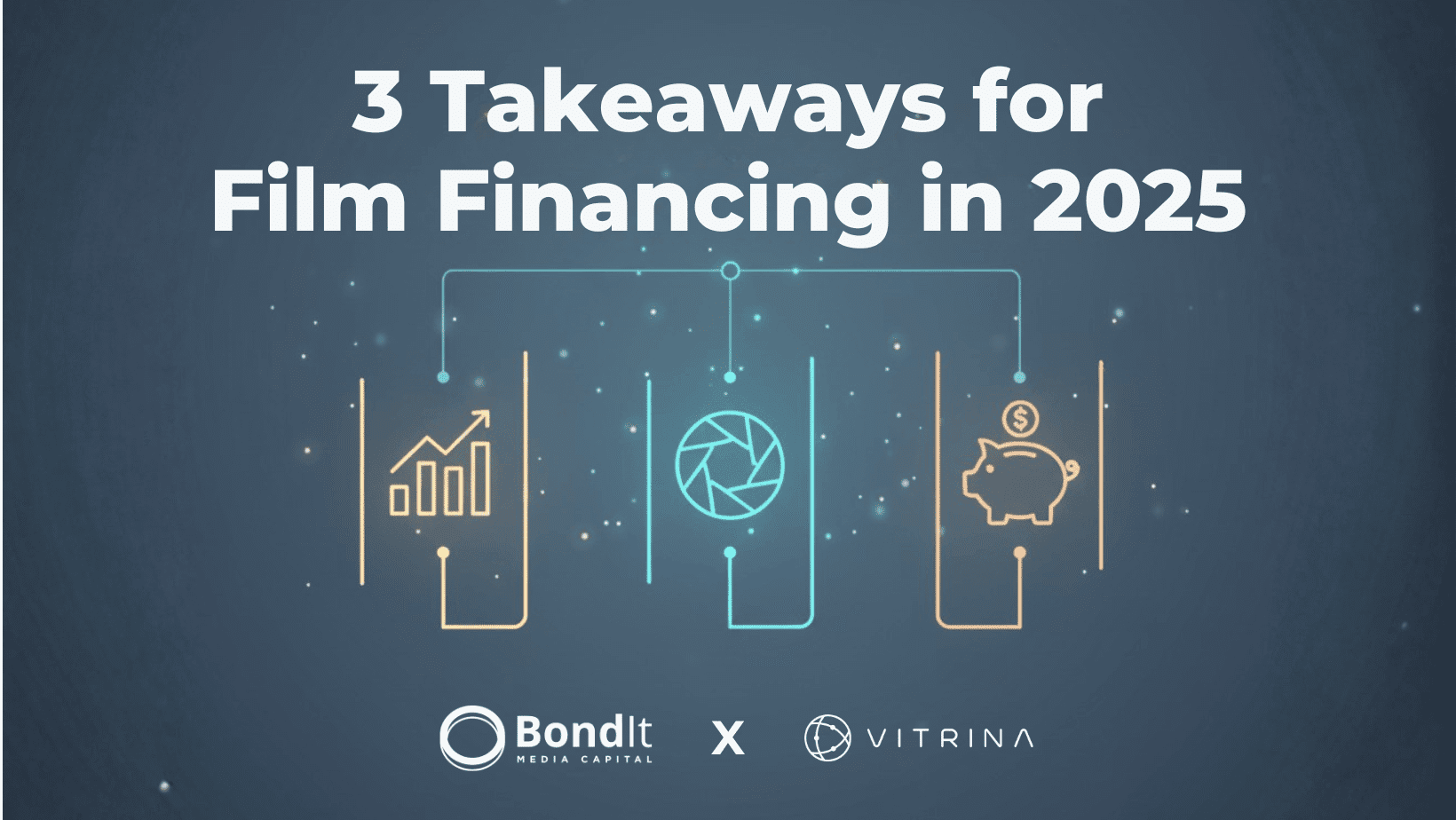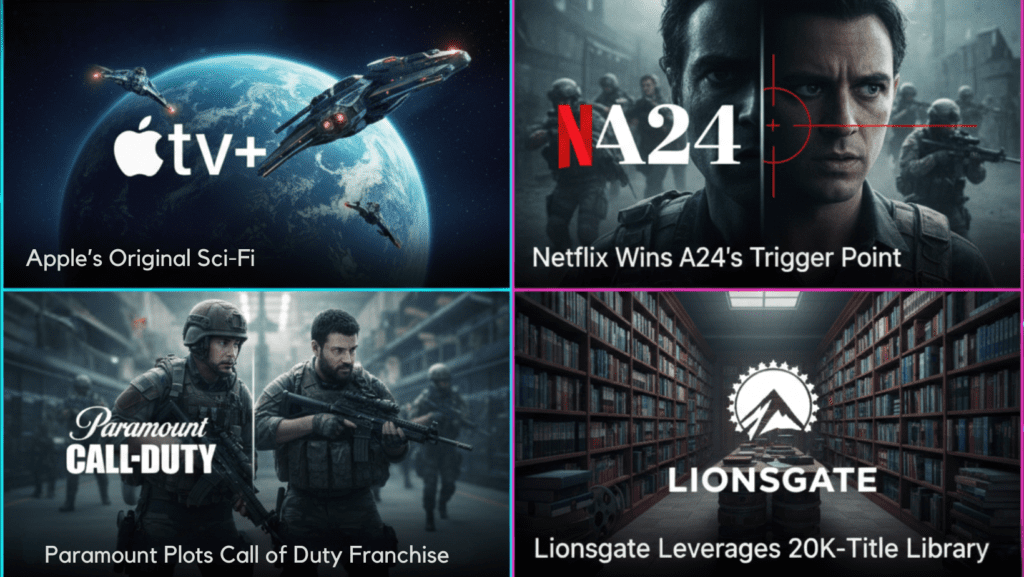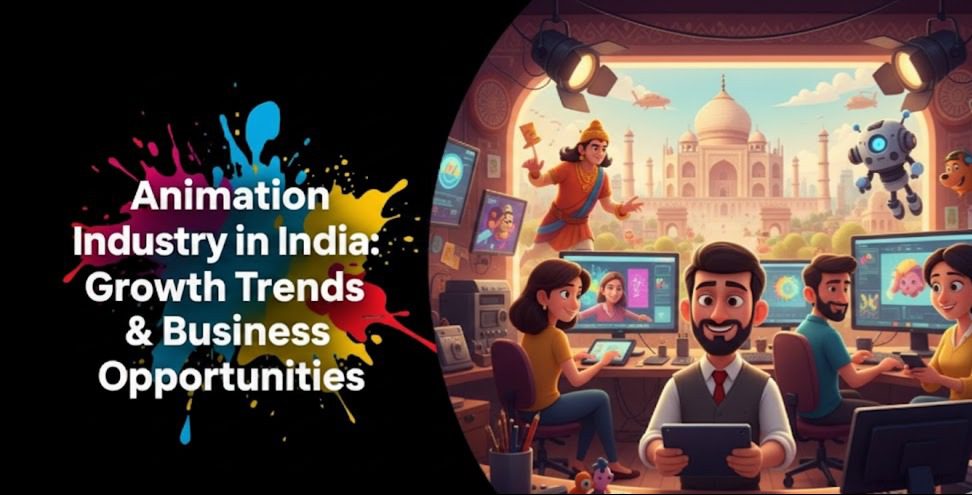3 Takeaways for Film Financing in 2025

Film and TV financing hasn’t stopped — it’s shifted. Studios are retrenching, streamers are risk-off, and equity is tighter. Yet, as BondIt Media Capital’s Matthew Helderman points out, projects are still getting financed — just with different stacks and stricter discipline.
🎙️ Why this matters: Executives like Helderman rarely share this intel in public. These are the conversations that happen in closed rooms — and Vitrina is making them accessible.
Here’s what it means for producers, distributors, and service providers in 2025.
Shooting Without Incentives? Say Goodbye to Financing
The signal:
“This will be the first year BondIt will shoot more than 50% of its content outside of the U.S.” — Matthew Helderman
BondIt is leaning into international shoots, where tax incentives and regional partners stretch budgets and reduce exposure.
For Producers: It’s no longer enough to sell the script. You need to show where you’ll shoot and which incentives are locked in.
For Distributors: Expect more internationally packaged content; early awareness of co-pro hubs gives you a first look at emerging titles.
For Service Providers: Being positioned in incentive-friendly regions (Canada, Eastern Europe, LATAM) makes you a direct magnet for inbound production.
Key takeaway: Global production layers are no longer optional — they’re the foundation of any 2025 financing plan.
Inflated Budgets? Prepare for Instant Rejection
The signal:
“A buyer is going to buy it for $5 million. So who’s taking the $15 million write-down? It’s not our business.” — Matthew Helderman
BondIt rejects projects where budgets don’t align with market value. The gap between spend and realistic returns is the fastest deal-killer.
For Producers: Arrive with comps and credible sales estimates. Over-budget projects with weak market appetite will be filtered out immediately.
For Distributors: This discipline works in your favor — fewer bloated, unrealistic titles reach your desk.
For Service Providers: Efficient projects are likelier to secure financing — which means consistent demand for streamlined crews, facilities, and delivery.
Key takeaway: Market alignment is the first hurdle — without it, the financing conversation ends.
👉 Track it as it happens: With Vitrina’s Global Film + TV Projects Tracker, you can see which projects are being greenlit, where co-pro hubs are heating up, and how incentives are shaping capital flows — in real time.
Why Soft Money Is the Real Power Player in 2025
The signal:
“We’ve seen equity returns shrink… and so to sort of compensate for it, we’ve seen different types of soft money and tax incentives around the globe.” — Matthew Helderman
Equity is harder to deploy at scale. Rebates, subsidies, and tax credits are now the backbone of independent film financing.
For Producers: Securing incentives upfront signals credibility to financiers. It often decides whether a project clears the greenlight.
For Distributors: Projects backed by incentives are de-risked; packaging rights around those deals is more competitive but also more stable.
For Service Providers: Operating in rebate-friendly regions creates a steady pipeline of inbound productions chasing those savings.
Key takeaway: Incentives and soft money aren’t extras — they’re the financing backbone in 2025.
So What?
The rules of financing have changed:
🌍 Global production incentives are baked into every serious plan.
💵 Budgets are held to market reality.
🏦 Soft money is carrying what equity no longer can.
For producers, this means walking in with structure, comps, and incentives in hand. For distributors, it means knowing where capital is flowing and rights are being packaged. And for service providers, it’s about being positioned in the territories where financing signals are strongest.
Insider intel unlocked by Vitrina: These conversations don’t hit Variety or Deadline. They happen in rooms you usually don’t have access to — and Vitrina is bringing them directly to you.
👉 Watch the full podcast and hear the BondIt conversation →








